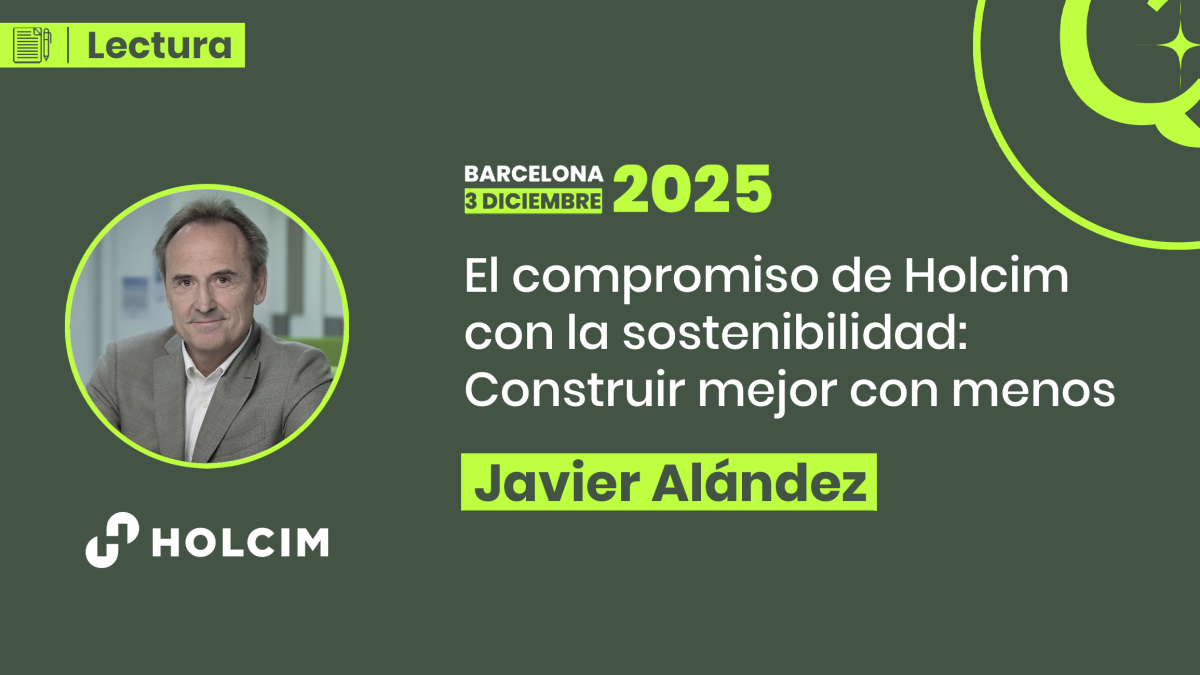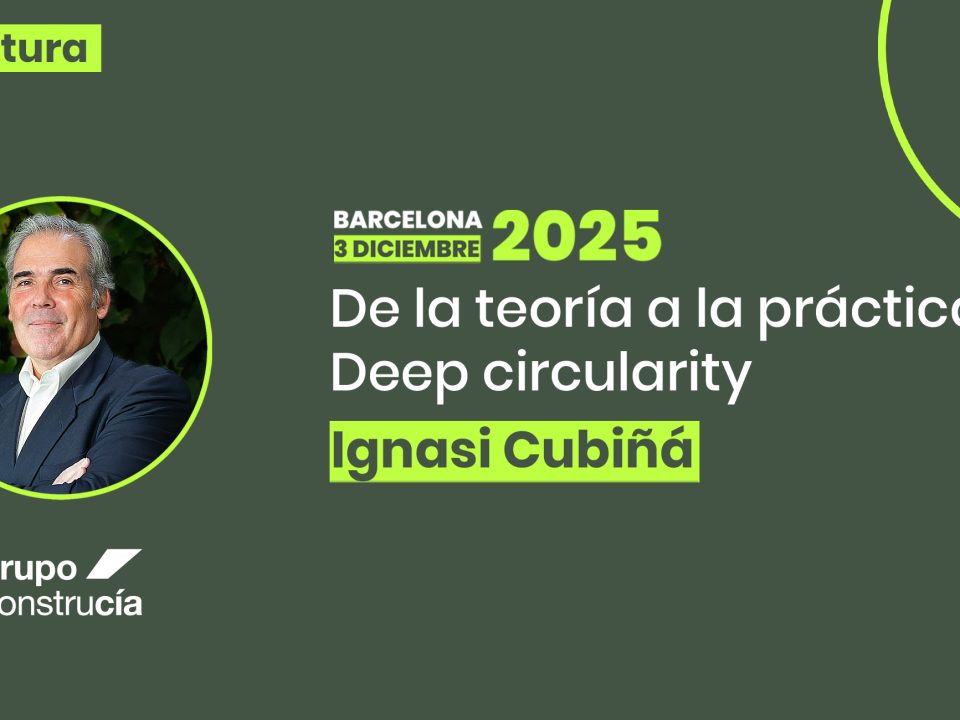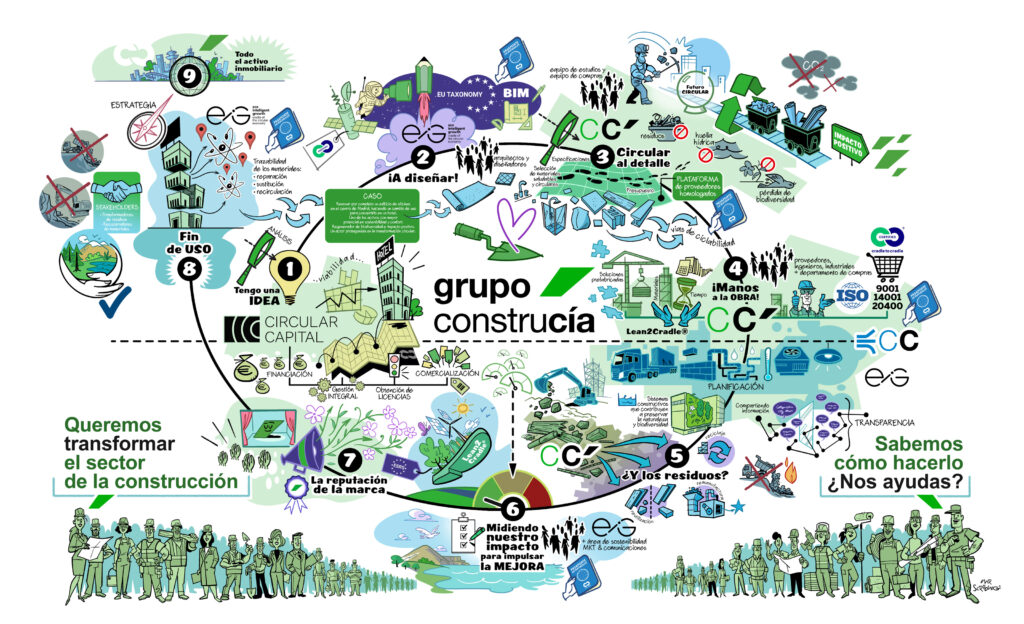
Deep circularity
13 de November de 2025
The value of what already Exists: how to give new life to architectural lighting through circularity
17 de November de 2025By Javier Alández, Director of Circular Economy Development at Holcim Spain
BSc in Biological Sciences, Complutense University of Madrid. More than 30 years of experience in industrial waste management for material recycling and energy recovery.
The construction industry is at a turning point, shaped by global megatrends that demand profound transformation. Population growth and rapid urbanisation are accelerating the need for housing and infrastructure, yet resource consumption is reaching record levels. If we continue at the current pace, by 2040 we will need the equivalent of 2.3 planets.
In this context, integrating circularity into construction materials—across business strategy, product development and urban planning—is no longer optional. It is the only way to meet societal needs while reducing the extraction and use of natural resources.
Transforming construction into a truly circular model is essential to keeping humanity within planetary boundaries while improving quality of life for all. At Holcim, this is why we have reframed our purpose: to become the leading partner for sustainable building solutions, accelerating a structural shift in the way the world builds.
Circularity from the start: building the new from the old
Circularity sits at the heart of this transformation. According to the Circularity Gap Report 2025, our planet is only 6.9% circular. The built environment has both the responsibility and the opportunity to lead this paradigm shift—especially considering that construction and demolition waste accounts for 30–40% of the total volume sent to landfills.
Circularity must not be the final step in the cycle; it must guide decisions from the very beginning of every project. Designing circular buildings means planning their entire lifecycle: selecting the right materials, choosing industrialised systems, and ensuring future reuse is possible.
The priority is clear: maximise the circularity of materials to build better with less—reducing both CO₂ emissions and waste generation. At Holcim, this becomes reality through technologies like ECOCycle®, which reintegrate demolition materials as substitutes for natural aggregates and low-emission raw materials. With more than 150 recycling centres worldwide, we continue advancing toward mandatory recycling in construction.
Nature as an ally of circularity
Given our industry’s reliance on natural resources, Holcim aims to become a nature-positive company, developing solutions that bring nature back into the heart of cities. Our nature strategy strengthens biodiversity, enhances water management and supports ecosystem restoration.
In Spain, we have rehabilitated more than 1,000 hectares across 35 former mining sites—restoring landscapes such as El Turó de Montcada, La Chanta, Yepes-Ciruelos and Charco del Tamujo through stewardship agreements with local organisations.
Water management is another core focus. Our objectives include reducing water intensity across operations, ensuring zero water pollution, and actively replenishing freshwater resources in high-risk areas. At Holcim’s ready-mix concrete plants, we’ve implemented measures such as water-recovery ponds, storage tanks, detailed monitoring systems and individual meters at end-use points.
Both nature restoration and circularity are guided by the same principle: a regenerative approach that brings together progress, environmental stewardship and urban resilience.
Toward purposeful construction
Circularity and nature-positive strategies must be embedded from the earliest phases of planning, design and construction. Only then can we build cities that are resilient, healthy and aligned with the natural environment.
At Holcim, our global strategy for circular construction revolves around four key pillars:
-
Securing material supply: establishing strategic partnerships to access high-quality construction and demolition materials (CDM) and reintegrate them into the building cycle.
-
Driving more ambitious standards: advocating updates to building codes and industry norms to increase minimum recycled content in buildings and infrastructure—public-sector collaboration is crucial.
-
Scaling ECOCycle®: expanding our technology that integrates recycled CDM into building solutions without compromising quality or performance.
-
Technological and digital innovation: advancing processing technologies and digital tools—including AI—to produce high-value CDM and optimise the entire circular materials chain.
True circular construction requires the active participation of every link in the value chain—from material suppliers and developers to builders, designers, public administrations and citizens. Only through coordinated collaboration can we maximise material recovery, reduce waste and emissions, and design buildings and cities that are made to last and regenerate.
At Holcim, we understand that building better with less requires not only technological and digital innovation, but also cooperation. Partnerships, knowledge-sharing and common standards are essential for integrating recycled materials and sustainable solutions effectively and at scale.









